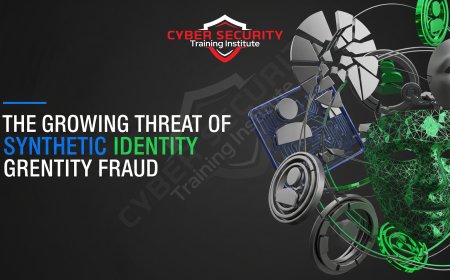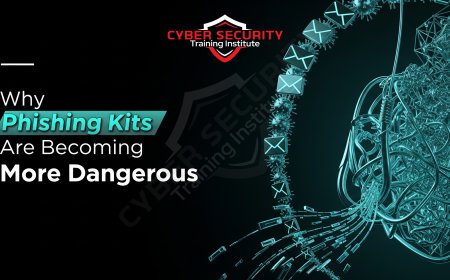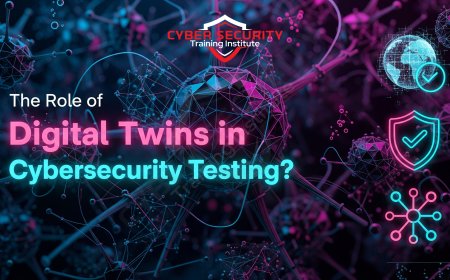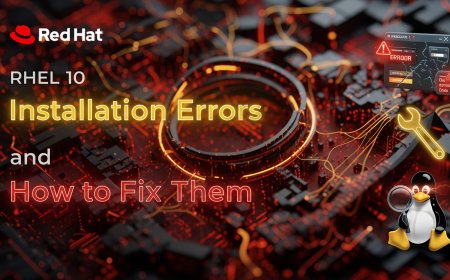How Is AI Being Used to Forge Digital Certificates in 2025?
On August 19, 2025, the very foundation of internet trust is being systematically targeted by AI. This article provides a crucial defensive analysis of how attackers are using AI not to break encryption, but to discover and exploit implementation flaws within the global Public Key Infrastructure (PKI). By training AI models on known vulnerabilities and cryptographic libraries, adversaries can now run continuous, automated campaigns to find weaknesses in Certificate Authorities (CAs) and forge trusted digital certificates. This industrializes a once-rare form of attack, creating a systemic risk to the entire chain of trust that underpins online security. This is an urgent briefing for CISOs and infrastructure security leaders, especially those responsible for the digital assets of tech hubs like Pune, Maharashtra. We dissect the anatomy of these AI-driven campaigns, explain the core challenge of trust corrosion, and detail the future of defense. Learn why security strategies must evolve to include AI-powered Certificate Transparency monitoring, automated certificate lifecycle management, and modern trust protocols like DANE and CAA to defend against this foundational threat.
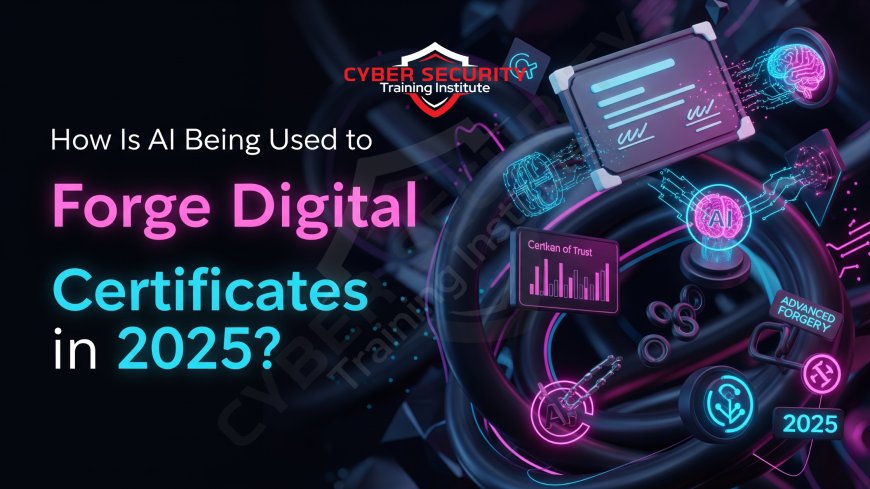
Table of Contents
- The Evolution from Manual PKI Flaw Hunting to AI-Powered Trust Exploitation
- The Old Way vs. The New Way: The Lone Wolf Hacker vs. The AI PKI-Vulnerability Scanner
- Why This Threat Has Become a Systemic Risk in 2025
- Anatomy of an AI-Driven Certificate Forgery Campaign
- Comparative Analysis: The New Landscape of PKI Exploitation
- The Core Challenge: The Corrosion of the Chain of Trust
- The Future of Defense: Transparency, Automation, and Modern Trust Protocols
- CISO's Guide to Defending Your Digital Identity
- Conclusion
- FAQ
The Evolution from Manual PKI Flaw Hunting to AI-Powered Trust Exploitation
As of today, August 19, 2025, the very foundation of internet trust—the digital certificate system—is facing a new and insidious threat. For decades, a successful attack against a Certificate Authority (CA) was a rare, catastrophic event, requiring a massive, manual effort from elite hackers. That era of artisanal hacking is over. Today, attackers are deploying AI models to systematically probe the global Public Key Infrastructure (PKI) for weaknesses. They are not breaking the underlying cryptography. Instead, they are using AI to discover and exploit the subtle implementation flaws, misconfigurations, and human process gaps that allow them to forge trusted digital certificates at scale, turning a rare disaster into a repeatable, systemic risk.
The Old Way vs. The New Way: The Lone Wolf Hacker vs. The AI PKI-Vulnerability Scanner
The old way of attacking the PKI ecosystem was a monumental undertaking. A lone wolf hacker or a small, dedicated team would spend months, or even years, manually reverse-engineering the software of a single CA. They would meticulously probe its web portals and enrollment systems, looking for a single, critical vulnerability that might allow them to issue a fraudulent certificate. This was a high-effort, high-risk, and extremely rare event, like the infamous DigiNotar breach.
The new way is to deploy an AI PKI-Vulnerability Scanner. This is not a single tool, but an entire AI-driven campaign. An AI model is trained on a massive dataset comprising all known PKI-related CVEs, the source code of every major cryptographic library like OpenSSL, and the technical documentation for CA software. This AI then continuously scans the internet, identifying every public-facing CA, Registration Authority (RA), and their associated software stacks. It does not just look for known bugs; it uses predictive analysis to find "cryptographic code smells"—complex patterns in the code that, while not a known CVE, have a high statistical probability of being an exploitable implementation flaw.
Why This Threat Has Become a Systemic Risk in 2025
The weaponization of AI against the internet's trust infrastructure has become a critical threat for several key reasons.
Driver 1: The Immense Complexity of the Global PKI Ecosystem: The system that secures the internet is not one entity; it is a massively complex, interconnected web of thousands of root CAs, intermediate CAs, resellers, registration authorities, and validation services, all running different software on different infrastructure. This complexity creates a vast and often poorly understood attack surface, perfect for an AI to explore systematically to find the single weakest link in the global chain.
Driver 2: The Widespread Struggle with Certificate Lifecycle Management: Many organizations, including some of the rapidly scaling tech companies in and around Pune, Maharashtra, struggle with managing their own digital certificates. This leads to forgotten, unpatched, or misconfigured certificate issuance servers, internal CAs, and enrollment APIs. An attacker's AI can discover these weak, internal links and exploit them to issue certificates that are trusted within the corporate network, enabling sophisticated insider attacks.
Driver 3: AI's Ability to Automate the Entire Attack Kill Chain: Forging a certificate is just one step. The true power of AI is its ability to automate the entire process. One AI agent can perform the reconnaissance to identify a vulnerable, minor CA in a foreign country. A second AI can use its predictive models to find a flaw in that CA's code. A third can automatically exploit the flaw to issue a fraudulent certificate for a high-value domain. And a fourth can then use that certificate to instantly weaponize a perfect, trusted phishing site against a target.
Anatomy of an AI-Driven Certificate Forgery Campaign
Understanding this methodical, AI-led process is crucial for building defenses. It is vital to note that these attacks target implementation flaws, not the underlying cryptographic math.
1. AI-Powered Reconnaissance of the PKI Landscape: An AI agent begins by continuously scanning and parsing public Certificate Transparency (CT) logs, DNS records, and network service banners. It builds a detailed, constantly updated map of the global PKI ecosystem, identifying which CAs are most prolific, what software they run, and which organizations they issue certificates for.
2. Predictive Flaw Discovery in Cryptographic Implementations: The attacker points a specialized, trained AI model at the public-facing software of a chosen target CA. The AI analyzes the code or binary and flags a subtle, previously unknown flaw in how the CA's custom-built certificate enrollment portal handles a specific type of authenticated request. The AI predicts that under certain conditions, this flaw could be exploited to allow an authenticated user to request a certificate for a domain they do not own.
3. Automated Exploitation and Privileged Access: An automated exploit tool, guided by the AI's findings, is then used. The attacker registers a legitimate account with the CA for a domain they own. They then use the AI-discovered flaw to exploit the system and issue a second certificate, but this time for a high-value target domain, like a major bank or e-commerce site.
4. Fraudulent Certificate Weaponization: The attacker now possesses a digital certificate for "major-bank.com" that has been signed by a trusted Certificate Authority. Every web browser in the world will automatically trust it. The attacker can now use this certificate to create a pixel-perfect, undetectable phishing site or to conduct a sophisticated Man-in-the-Middle (MitM) attack, intercepting and decrypting user traffic to the real bank.
Comparative Analysis: The New Landscape of PKI Exploitation
This table illustrates the profound shift in how the internet's trust fabric is being attacked.
| Attack Aspect | Traditional CA Compromise | AI-Driven Certificate Forgery (2025) |
|---|---|---|
| Methodology | A manual, opportunistic, and lengthy campaign to find a single major flaw in a well-known CA. | An AI-driven, systematic, and predictive analysis of the entire global PKI ecosystem to find the weakest link. |
| Speed of Discovery | Typically takes months or even years of dedicated, clandestine human effort. A very rare event. | A continuous, automated scanning process that can identify and flag potential high-probability flaws in days or weeks. |
| Primary Attack Focus | Often focused on breaking the CA's network perimeter or a deep, architectural flaw. | Focused on finding subtle but critical implementation bugs in the vast software supply chain that underpins the PKI. |
| Resulting Forgery | Often resulted in a small number of high-impact fraudulent certificates before being detected. | The automated process creates the potential for the mass issuance of thousands of fraudulent certificates at scale. |
| Primary Target | The operational security and human processes of a Certificate Authority. | The software implementation of the cryptographic protocols and the complex web of interactions within the PKI. |
The Core Challenge: The Corrosion of the Chain of Trust
The core challenge presented by this threat is the systemic corrosion of the internet's chain of trust. The security of every TLS connection, every software update, and every secure email depends on a user's browser or operating system being able to trust the digital certificate presented by the server. This trust is hierarchical. Your browser trusts a handful of Root CAs, which in turn bestow trust upon Intermediate CAs, which then issue certificates for individual domains. An AI-driven attack that can find and compromise even a small, seemingly insignificant CA at scale can be used to forge a certificate for any domain on the internet. This poisons the entire well of trust. It creates a scenario where the green padlock in your browser, the ultimate symbol of online safety, can no longer be implicitly trusted.
The Future of Defense: Transparency, Automation, and Modern Trust Protocols
Defending against an automated attack on the trust infrastructure requires a defense built on transparency and automated verification.
1. AI-Powered Certificate Transparency (CT) Log Monitoring: The practice of publishing all issued certificates to public CT logs is a critical defense. The future is to use our own defensive AI to continuously monitor these logs. A defensive AI can learn the normal certificate issuance patterns for all of a company's domains and can instantly flag an anomaly—such as a new certificate for your domain being issued by an unexpected or foreign CA—as a potential forgery within minutes of its creation.
2. Automated Certificate Lifecycle Management (CLM): A huge portion of the PKI attack surface comes from human error. Automated CLM platforms can manage the entire lifecycle of a certificate, from issuance and renewal to revocation. By automating these processes, organizations can enforce strong security policies and reduce the risk of the misconfigurations and forgotten infrastructure that an attacker's AI is designed to find.
3. The Adoption of Modern, Enforceable Trust Protocols: Defenders must regain control. Protocols like DNS-Based Authentication of Named Entities (DANE) and Certification Authority Authorization (CAA) allow a domain owner to use DNS records to explicitly state which CAs are permitted to issue certificates for their domain. This provides a powerful, secondary check that can instruct a browser to reject a fraudulent certificate, even if it was issued by a compromised but technically trusted CA.
CISO's Guide to Defending Your Digital Identity
CISOs must treat the integrity of their organization's digital certificates as a Tier 0, mission-critical security function.
1. Mandate and Automate 24/7 Certificate Transparency Monitoring: Do not rely on manual checks or sporadic reports. You must deploy an automated service that uses AI to monitor all public CT logs for any certificate issued for your domains, subdomains, and acquisitions, and that can generate a high-priority alert instantly upon detecting a suspicious issuance.
2. Treat Your Internal PKI as the Crown Jewels: Your internal CAs and certificate management systems are among the most critical infrastructure you own. They must be protected with the highest possible level of security, including hardware security modules (HSMs), strict multi-factor authentication, severe access controls, and an aggressive patching and vulnerability management program.
3. Immediately Implement CAA and Plan for DANE: Certification Authority Authorization (CAA) is a simple but effective DNS record that you can implement today to limit which CAs can issue certificates for your domains. You should also begin planning for the future adoption of the more powerful DANE protocol.
4. Scrutinize Your Entire Supply Chain of Trust: Your security is not just about your direct CAs. You must understand the security posture of the CAs used by your critical business partners and suppliers. A compromise at a smaller, less secure CA used by a key partner could still be weaponized in a sophisticated attack against your shared ecosystem.
Conclusion
Artificial intelligence is not breaking the unbreakable mathematics of modern cryptography. Instead, it is industrializing the far more practical process of discovering and exploiting the human and software flaws in the vast, complex infrastructure that surrounds it. The ability to forge digital certificates by compromising weak links in the global PKI chain at scale threatens to erode the very foundation of trust upon which the digital economy is built. For every enterprise, the defense is no longer a passive act of "installing an SSL certificate." It is an active and continuous process of taking proactive control over your organization's identity through constant monitoring, deep automation, and the adoption of modern, enforceable trust protocols.
FAQ
What is a digital certificate?
A digital certificate is a small data file used in cryptography that serves as a digital passport. It proves the ownership of a public key and, for TLS/SSL, verifies the identity of a website's owner, allowing for secure, encrypted connections.
What is Public Key Infrastructure (PKI)?
PKI is the entire framework of hardware, software, policies, and standards used to create, manage, distribute, use, store, and revoke digital certificates and manage public-key encryption. It is the "trust infrastructure" of the internet.
What is a Certificate Authority (CA)?
A Certificate Authority is a trusted entity that issues digital certificates. Browsers and operating systems are pre-programmed with a list of trusted Root CAs, forming the basis of the internet's chain of trust.
Is AI breaking the encryption (e.g., RSA/ECC)?
No, this is a critical distinction. The AI is not breaking the underlying, proven cryptographic algorithms. It is finding flaws in the software that *implements* the cryptography or in the human processes that manage the certificate issuance system.
What is Certificate Transparency (CT)?
Certificate Transparency is an open framework where all issued TLS/SSL certificates from participating CAs are published to public, auditable logs. This allows domain owners and researchers to monitor all certificates being issued for any domain name.
What is a Man-in-the-Middle (MitM) attack?
A MitM attack is where an attacker secretly intercepts and relays communications between two parties who believe they are communicating directly. A fraudulent but trusted certificate is the ultimate tool for a successful MitM attack on an encrypted session.
What is a "cryptographic code smell"?
It is a term for a pattern in source code that, while not a bug itself, suggests a potential weakness or a misunderstanding of a cryptographic concept by the developer. An AI can be trained to find these subtle but dangerous patterns.
What is DANE?
DANE stands for DNS-Based Authentication of Named Entities. It is a protocol that lets a domain administrator use DNS to publish a record that specifies exactly which certificate a browser should expect, binding the certificate to the DNS system and adding a powerful layer of verification.
What is Certification Authority Authorization (CAA)?
CAA is a security standard that allows a domain owner to add a simple record to their DNS settings that specifies which CAs are permitted to issue certificates for that domain. It is a simple and effective first step in locking down certificate issuance.
Wasn't the DigiNotar hack a case of certificate forgery?
Yes, exactly. The 2011 DigiNotar breach was a famous example where a Dutch CA was compromised, and the attackers issued hundreds of fraudulent certificates for high-profile domains. The risk is that AI could make such rare, catastrophic events much more common.
Why would a small, obscure CA be a target?
Because your browser trusts hundreds of CAs from all over the world. A compromise of a small, less-secure CA in one country can be used to issue a fraudulent certificate for a major bank in another country, and all browsers would trust it by default.
What is a Registration Authority (RA)?
An RA is an entity that is authorized by a CA to verify the identity of entities requesting a certificate. Compromising a less-secure RA can be another way to trick a CA into issuing a fraudulent certificate.
What is a Hardware Security Module (HSM)?
An HSM is a specialized, hardened hardware device used to secure and manage digital keys and perform cryptographic operations. CAs use HSMs to protect their highly sensitive private signing keys.
How does this threat relate to the software supply chain?
It is a direct threat to the software supply chain. An attacker with a forged certificate for a legitimate software company could sign their malware, making it appear to be a legitimate, trusted software update from that company.
How would I know if I visited a site with a forged certificate?
You would not. Your browser would show the green padlock and the correct company name, because the certificate was issued by a CA that your browser trusts. This is what makes the threat so dangerous.
What is a "chain of trust"?
It is the hierarchical system that verifies identity online. Your browser trusts a Root CA, the Root CA vouches for an Intermediate CA, and the Intermediate CA vouches for the website's certificate. A break anywhere in that chain can compromise the entire system.
Can this AI be used for defense?
Yes. The same AI techniques that attackers use to find flaws can be used by defenders. Software vendors and security companies are using AI to scan their own code for these predictive weaknesses before the product ever ships.
Does my company's internal PKI need to worry about this?
Absolutely. An attacker who gains access to your network can use an AI to find flaws in your internal CA. They could then issue fraudulent certificates for internal servers, allowing them to intercept employee traffic and move laterally across the network.
What are Certificate Transparency logs?
They are publicly accessible, append-only logs of all certificates issued by CAs. They act as a public audit trail, so anyone can see if a certificate was issued for their domain without their permission.
What is the CISO's most critical takeaway?
You can no longer passively trust the global PKI ecosystem. You must take active, automated control of your organization's digital identity by continuously monitoring for unauthorized certificate issuances and using modern DNS-based protocols to enforce your issuance policies.
What's Your Reaction?
 Like
0
Like
0
 Dislike
0
Dislike
0
 Love
0
Love
0
 Funny
0
Funny
0
 Angry
0
Angry
0
 Sad
0
Sad
0
 Wow
0
Wow
0







